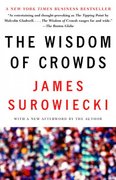Question
1. Economists believe that the _____ determines the price level in the long run. a. money supply b. asset market approach c. exchange rate d.
1. Economists believe that the _____ determines the price level in the long run.
a. money supply
b. asset market approach
c. exchange rate
d. marginal tax rate
2. Suppose the average price of a Big Mac in the United States is $3.50 while in Japan the average price is 400 yen. If the market exchange rate is that 1 dollar is exchanged for 100 yen, the purchasing power parity model of exchange rate determination suggests that:
a. the yen is overvalued.
b. the yen value is about correct.
c.the price of a Big Mac in Japan will rise.
d. the dollar will depreciate against the yen.
3. Suppose that U.S. prices rise 4 percent over the next year while prices in Mexico rise 6 percent. According to the purchasing power parity theory of exchange rates, which of the following should happen?
a. The dollar will depreciate
b. The peso will be worth 1.5 dollars in the foreign exchange market
c. The peso will depreciate
d. The dollar will be worth 1.5 pesos in the foreign exchange market
4. Given the combination of PPP with quantity theory equations, which of the following statements is true?
a. Everything else remaining unchanged, the price of the foreign currency (e) would be reduced by an increase in the relative size of the money supply in the domestic economy.
b. Everything else remaining unchanged, the price of the foreign currency (e) would be raised by an increase in the relative size of foreign production.
c. As long as the money supplies in the two countries are the same, the exchange rate will be equal to one
d. The exchange rate would remain unaffected as long as the relative growth in productivity between the two nations remains constant, even if the relative money supply varies between the two economies.
5. Everything else fundamental remaining unchanged, the monetary approach predicts that a 5 percent cut in the money supply by the Fed will result in:
a. inflation in the U.S. economy.
b. a decrease in the market rate of interest in the U.S.
c. an increase in foreign investments by the Americans.
d. an appreciation of the U.S. dollar vis--vis other currencies.
Step by Step Solution
There are 3 Steps involved in it
Step: 1

Get Instant Access to Expert-Tailored Solutions
See step-by-step solutions with expert insights and AI powered tools for academic success
Step: 2

Step: 3

Ace Your Homework with AI
Get the answers you need in no time with our AI-driven, step-by-step assistance
Get Started


